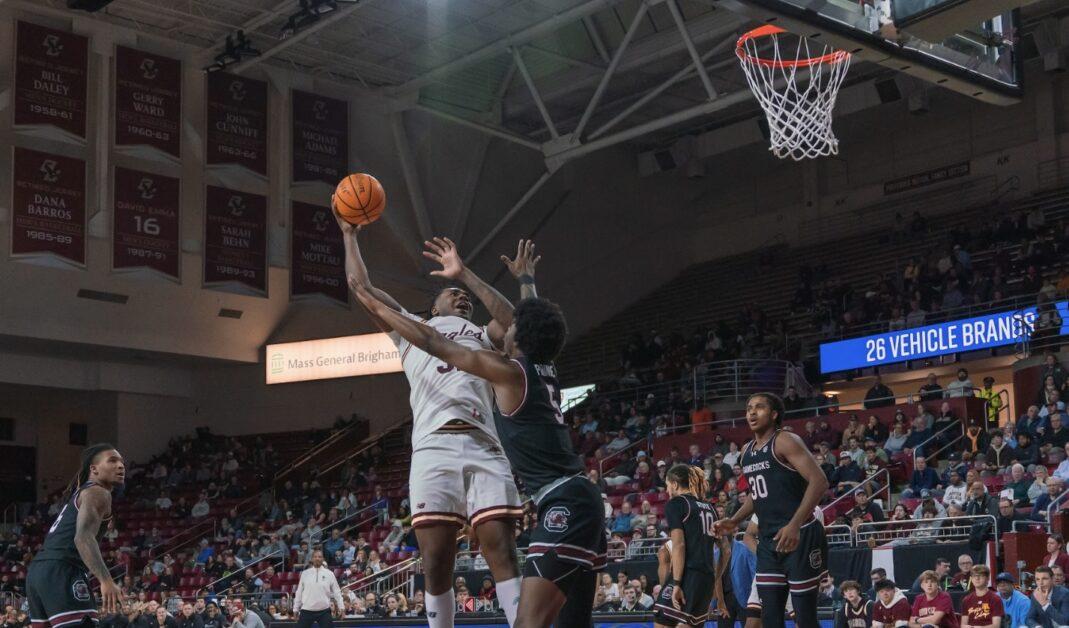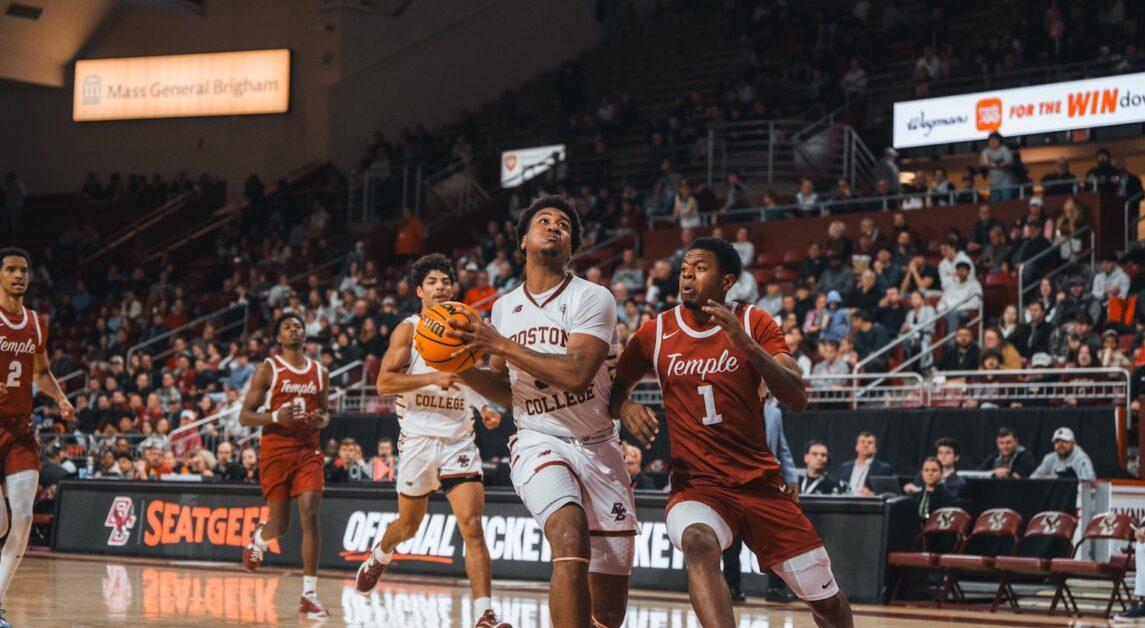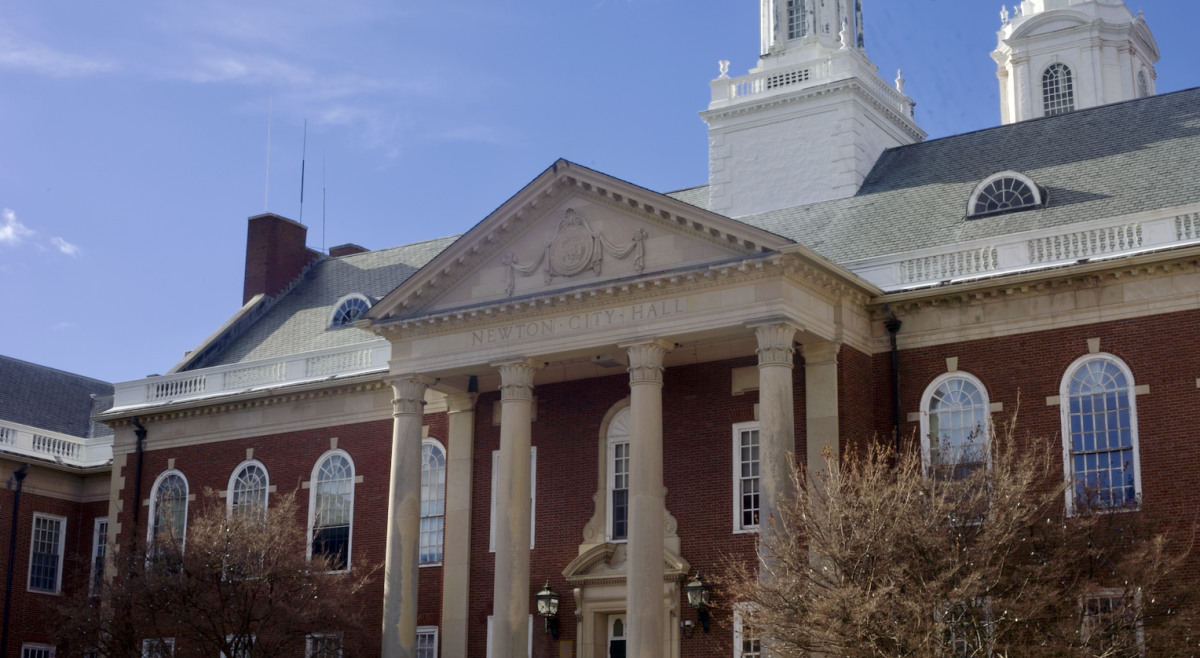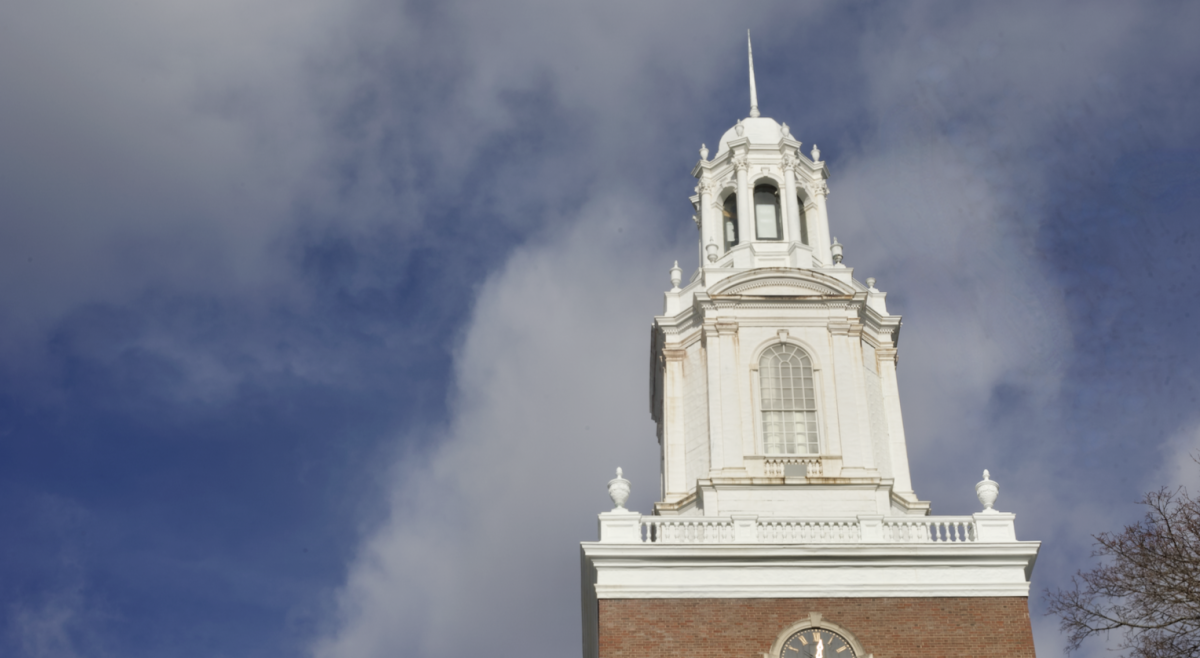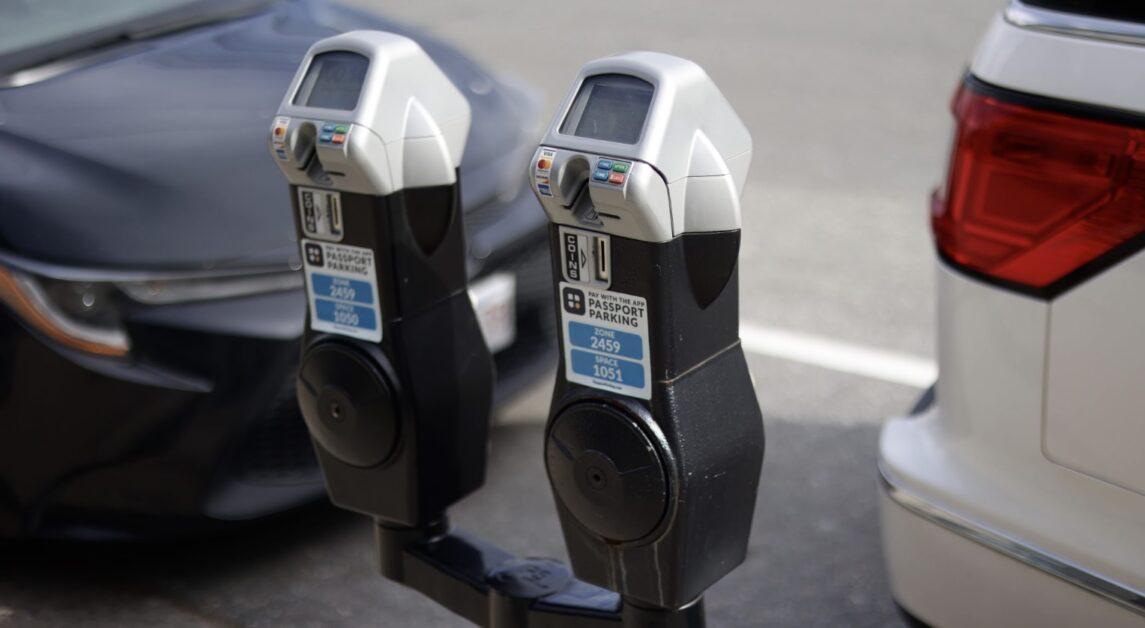Boston’s Rose Kennedy Greenway is home to twelve 24-foot tall, sentinel-like structures—the “Light Blades” that overlook and illuminate the Wharf District parks. A sign next to the public installation invites passersby to text any color to a phone number, which then regulates the color displayed by the Light Blades. For those who have had their fill of Roy G. Biv in grade school, rest assured. New American Public Art (NAPA), the studio behind the project, threw in a little under one thousand colors to choose from.
The public art installation, known as the “Color Commons”, went live this January, and will continue throughout the winter. As it stands, Bostonians can visit the interactive public artwork and give it a whirl firsthand. All that is required to participate is a cell phone that can send a text. Although it is worth mentioning that having a scholarly repertoire of Crayola colors is a plus.
The Light Blades, and the Greenway space they inhabit, stretch across two blocks. To the north lies the historic Long Wharf, and to the south, the colossal Rowes Wharf arch which grandly frames the Light Blades at sunset. Aside from the sidewalk, the entire segment of land is set aside for green space, despite its location right off of the financial district—like an alcove away from the city. At night, when the glowing colors of the blades are most visible, the area is astonishingly vacant, and it is not uncommon for individual users to have full control over the entire array of lights.
The scene created by the Color Commons is at once awe-inspiring and seductive for onlookers. Most who stroll by and shoot a text don’t expect the color of an entire city block to update one second after pressing send. Then, they will try again and realize the colors did in fact just change—faster than they can Snapchat the moment to a friend. Sometimes, multiple users can engage in back-and-forth color warfare from blocks away: red, peach, green, fuchsia, forest green, ochre, and so on.
NAPA, the multi-disciplinary studio behind the Color Commons, conceives all its projects as chimeras between architecture, engineering, and art, with the guiding purpose of public interactivity. Color Commons is no exception.
Dan Sternof Beyer, NAPA founder and creative director, explained that the studio incorporates hefty amounts of technology into their installations due to the complex nature to interactive art pieces.
“The art side of it is really thinking about the sociology of the public and thinking about what draws people in, what makes them curious, and what brings out curiosity,” Beyer said.

Architecture is a concern distinctive to NAPA’s work. Unlike the safety provided by a snug gallery, anything can go awry in a public space, so NAPA dedicates most of their time to finding solutions that maintain the physical integrity of their projects.
“We have all these rules of thumb we work with,” Beyer said. “We think of an over-caffeinated toddler and then also a drunken sailor. If we can somehow accommodate both of these individuals, then everyone else can enjoy it as well. We can’t just put out papier mâché.”
Beyer is one of six members in the artist collective—his title is a bit misleading, as every member of NAPA is also an original founder and contributing creative director. The team features members with degrees in architecture, electrical engineering, mechanical engineering, and chemical engineering to name a few—Beyer has a background in sociology and multimedia art. According to Beyer, NAPA carried out projects for free initially, just as a joint hobby between friends that had a passion for engineering art. Since then, they have moved away from “being fabricators”. Now, fortunate enough to run NAPA as a full-time gig, they formulate ideas on their own, typically in front of a whiteboard for hours and hours before arriving at consensus.
Above all else, NAPA champions interactivity in all the work they do.
“If the art-piece is interactive, in a way that expresses people’s interactions with it, then the pieces are embodiments of us, and people are always interested in other people,” Beyer said. “Ideally, people are engaging with others through our art. And that’s timeless.”
Color Commons, according to Beyer, is one of the more straightforward projects NAPA has tackled. The final system is simple, not out of ease but rather for the sake of speed. Texts from pedestrians’ phones go to NAPA’s SMS server, which are then routed back to a tiny Raspberry Pi at the park, a tiny computer motherboard that fits in one’s palm. Raspberry Pi then translates the code, and looks for a match among the catalogue of 950 colors—a list which is borrowed from the webcomic XKCD. Upon matching, the Raspberry Pi sends commands to each of the Light Blade’s iPlayers (light controllers) and thus comes the colorful output, all within one to two seconds.
Last year, in a more serious project titled “Ourself,” NAPA collected interviews from hundreds of residents of Camden, N.J. The responses touched a range of delicate topics including personal motivation, adversity, and life ambitions. Then, in public spaces just like Boston’s Greenway, NAPA set up two prism-shaped mirrors with a walkway in the middle that allowed passersby to step inside. The two mirrors created an infinite hallway effect, which permits the subject to see only his or her own reflection. When the rig sensed someone was standing between the mirrors, compiled recordings from the interviews played out loud.
For Beyer, it was moving to see their public installation make an impact on a city and its people. “Ourself” embodied the full potential of breadth and depth in a NAPA public art piece.
Beyer and his team work from Artisan’s Asylum, a non profit community center based in Somerville that provides workspaces for groups like NAPA. They are, however, setting their sights on expanding to more cities as they continue creating successful work for organizations like the Rose Kennedy Greenway. For NAPA, the heart of its art is in the urban, and the public: something that everyone can possess.
Featured Image by Gao Liu



